
Do Sheds Need a Base? The Shed Foundation Dilemma
So, you're thinking about whether your shed needs a base?
The humble shed is a fantastic addition to any property, whether for storage, a workspace, or a cozy retreat. But before you start building, you have a critical decision: Should you put it on a shed foundation or just set it up directly on the ground?
The Importance of Shed Bases
So, what is a base? A shed base, also known as a foundation, is a structural support system that serves as a sturdy platform on which the shed rests. While some might consider it an unnecessary extra step, having a proper shed base brings numerous advantages.
- Stability and Durability—A well-constructed shed base provides stability, ensuring it can withstand varying weather conditions, including heavy rain, snow, and strong winds. Elevating the shed off the ground prevents it from settling unevenly, which could lead to structural damage over time.
- Improved Air Circulation - A shed with a proper base allows air to circulate beneath it. Backyardoverhaul.com says, “...I would recommend making the base at least 4 inches high from the ground. This will allow the proper air to circulate under most sheds.” So, building the base correctly plays a crucial role. This can also help reduce the chances of dampness and mold growth.
Types of Shed Bases
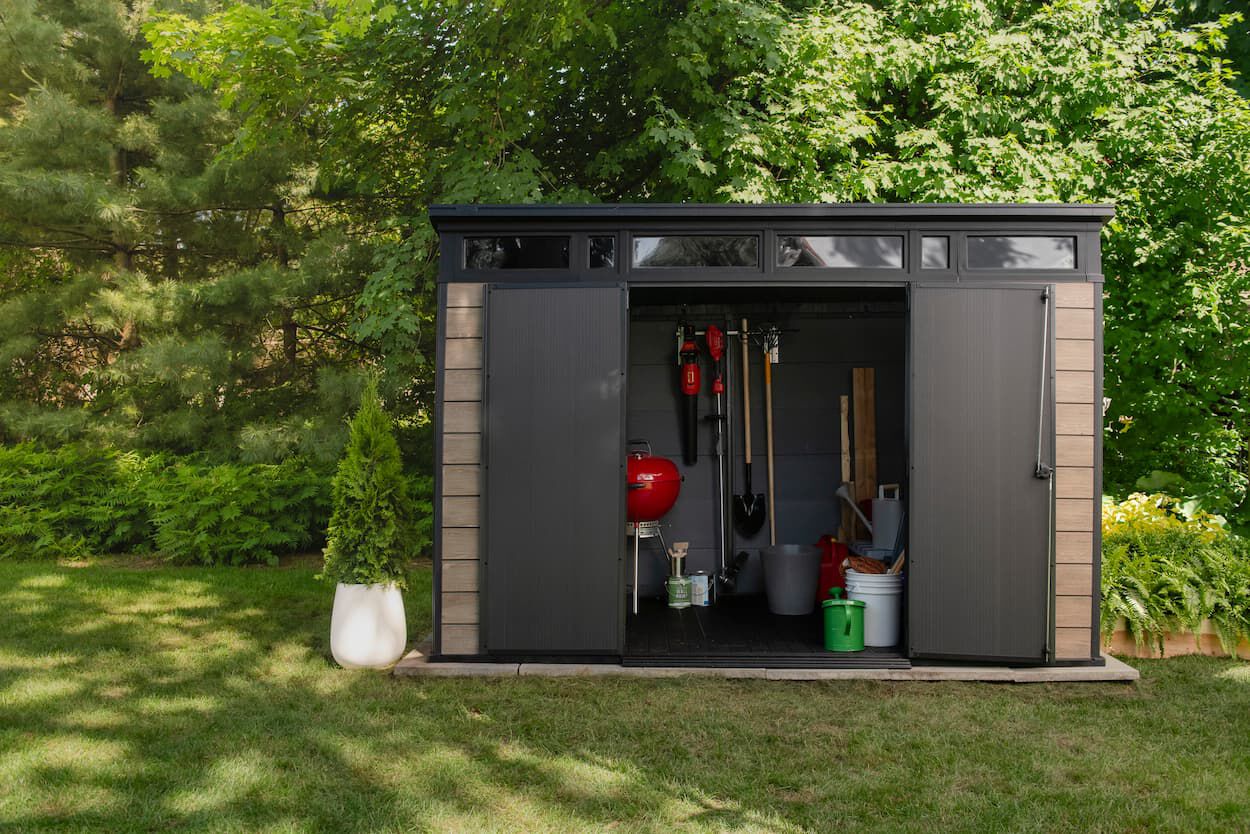
Several shed base types are available, catering to different needs and budgets. Here are some standard options:
- Gravel Base: Involves leveling the ground and laying down a thick layer of compacted gravel. Provides stability and drainage. Suitable Conditions: Cost-effective; ideal for areas with heavy rainfall
- Concrete Slab: A solid and level shed foundation is created by pouring concrete into a prepared frame. Offers exceptional durability and protection. Suitable Conditions: Suitable for long-term use; provides excellent moisture protection
- Wooden Piers: Involve setting treated wood posts into the ground to support the shed. Suitable for uneven terrain and relatively easy to construct. Suitable Conditions: Work well on uneven ground and provide a sturdy support system
- Plastic Shed Base Kits: Consists of interlocking plastic grids filled with gravel or soil. Offer stability, permeability, and easy installation. Suitable Conditions: Provide a stable base; ideal for various shed sizes
- Pavers: Requires arranging and leveling pavers over a compacted base. Offers a stable, durable surface. Suitable Conditions: Ideal for smaller sheds and areas where a decorative base is desired.
What Bases Are the Best for Sheds?
The best base for a shed depends on several factors, including the shed's size, the local climate and the intended use of the shed. Generally, a well-constructed and level foundation is crucial to ensure the shed's stability and longevity.
Concrete slabs are a good choice as they provide a durable and long-lasting base suitable for heavy or larger sheds. However, another very popular option is a gravel base. Building Elements says, “A gravel pad shed foundation is our recommendation because they provide a stable base for your shed to rest on, are very effective at draining water away from the bottom of your shed as well as being affordable.” Another eco-friendly option is using pressure-treated timber frames set on top of leveled and compacted gravel, providing adequate support while being easier to install.
Ultimately, the best base for a shed is one that meets your budget, specific needs and local building regulations. Before making a decision, it's essential to consult with a professional or local building authority to ensure compliance with any standards and regulations in your area.
Building a Shed Without a Base
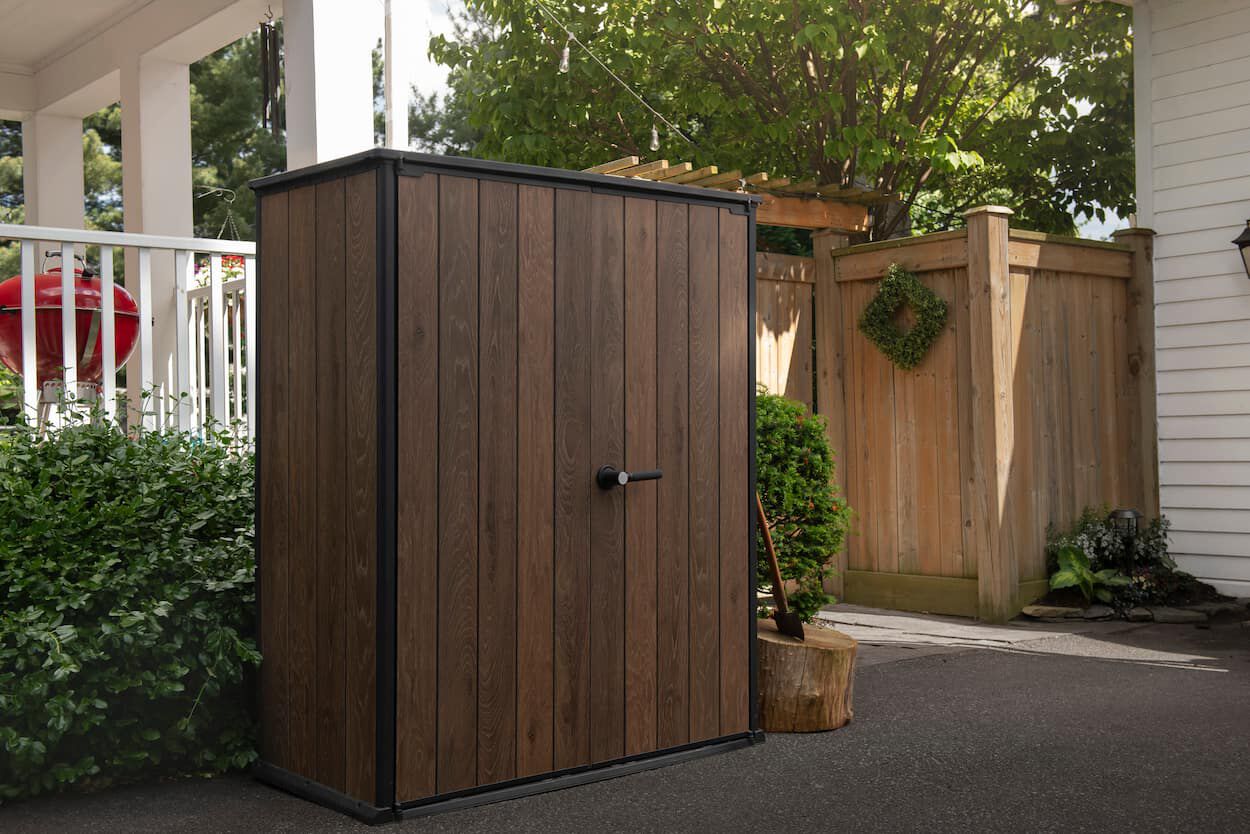
While a base has its advantages, there are circumstances where a shed can be constructed directly on the ground. This option is more suitable for specific scenarios:
Temporary Sheds
Building it directly on the ground may suffice if you plan to use the shed for a short period or as a temporary solution. However, this could reduce its durability and protection.
Smaller Garden Sheds
For small, lightweight garden sheds that don't require extensive structural support, placing them on compacted soil might be acceptable. Nevertheless, ensuring proper drainage and using a moisture-resistant coating on the shed is crucial. Even with a small shed, a base still might be the best option. It depends on your circumstances, though.
Tips for Shed Construction
Regardless of whether you choose to build a base or not, here are some essential tips for shed construction:
- Check Local Regulations - Before starting your shed project, check local building codes and regulations.
- Proper Site Preparation - Prepare the site by clearing away debris, leveling the ground, and ensuring adequate drainage. A level and well-drained site promotes the longevity of your shed.
- Quality Materials and Construction - Whether you opt for a base or not, use high-quality materials and construction techniques to ensure the shed's stability and durability.
So, do I need a Shed Base?
The decision to build a shed on a foundation or directly on the ground depends on various factors, including the shed's size, intended use, and local conditions. While a base provides stability, moisture protection, and improved air circulation, some situations may permit building without one.
Consider your specific needs and budget, and consulting a professional can help you make the right choice for your shed project. Whether with a sturdy concrete slab or a simple gravel base, your well-crafted shed will undoubtedly become a valuable asset on your property for years.
Some companies also include a shed base or floor panel with your shed purchase. For example, all Keter sheds are incredibly sturdy and have a heavy-duty shed floor panel. However, we highly recommend building the shed on solid and level ground. So, it’s essential to consider this as you shop and prepare for your new shed.

We build in a sustainable manner.
We use innovative materials and leading technologies to build planet-friendly products that last a lifetime.



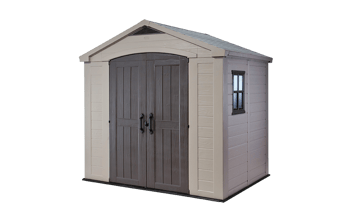



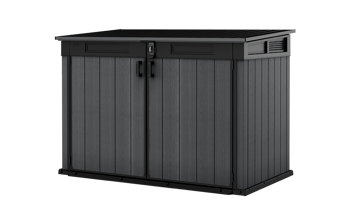

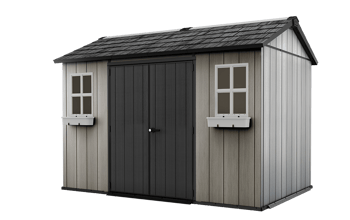



.jpg?sw=120)
.jpg?sw=20)
